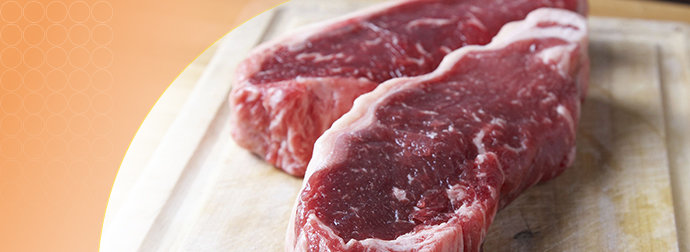
Recent news in Food & Feed Analysis
- Home
- /
- Antibiotics in meat: 5...
Antibiotics in meat: 5 facts about residues in food

Antibiotic residues in food have become a hot topic in recent years. There is widespread uncertainty: How dangerous are drug residues to consumers? And how can you be sure that your food is free of residues? 5 questions and answers.
1. How do antibiotics get into the meat?
When farm animals are treated with antibiotics, drug residues settle in the animal’s tissue. Residues end up not only in the meat, but also in other products of animal origin such as milk, eggs and honey. The use of antibiotics on livestock is widespread and often indispensable. By keeping a large number of animals in small spaces, infections may spread quickly. A treatment of sick animals and often also a preventive treatment of the still healthy animals is therefore necessary. However, the use of antibiotics as growth promoter is prohibited.
2. Are antibiotics a health risk?
Antibiotics are essential medicines for the treatment of bacterial infections. However, drug residues in foods may potentially have carcinogenic, toxic or allergenic effects. As long as the maximum residue limits (MRL) are complied with, residues pose only a low risk to the consumer’s health.
3. What does antibiotic resistance mean?
The increasing use of antibiotics leads to more and more resistances. This means that bacteria develop and become insensitive to certain antibiotics. If you come into contact with resistant germs, dangerous and difficult-to-treat infections may occur. In order to protect themselves against resistant germs, consumers should observe certain hygiene measures. For instance, meat should be cooked thoroughly. You can find more tips in a leaflet by the German Federal Institute for Risk Assessment.
4. How big a problem are antibiotics in food?
Within the European Union, the use of antibiotics is regulated by the law. In many countries, maximum residue limits have been determined and are checked on a random basis (see EU regulation 37/2010). When animals are treated with antibiotics, a waiting period is required before slaughter. As a result of these strict controls, the discovery of large quantities of antibiotics in meat has become rare. Mostly, antibiotics are found in low quantities in poultry and pork. Beef or other animal products such as milk, eggs and honey rarely contain residues.
5. How are antibiotic residues detected?
Antibiotic residues in food can be detected in several ways. An ELISA test allows a precise quantification of certain antibiotics. By performing a sample preparation using immuno-affinity columns and a subsequent HPLC test, even complex matrices can be analyzed. The Premi®Test is a microbial rapid test. In this test, a population of bacteria is added to the sample. Based on the growth of the bacteria, you can see whether the sample contains antibiotics or not. This method allows an easy and cost-effective screening for a wide range of antibiotics. In addition, this test can be performed directly on-site at the breeder, at the slaughterhouse or at meat plants.
Furthermore, antibiotic residues can also be detected in bovine and porcine urine. In that case, the reagent Premi®Test Urine must be added to the urine sample. After that step, the Premi®Test can be carried out regularly. The Premi®Test Urine will be available from February 2016 in a new format, making the screening for antibiotic residues in urine even easier.

